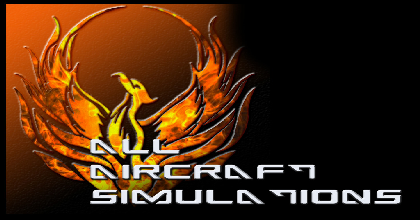01.05.2010, 15:22
Ok so on top you have raw files...and here reworked.
I post this as some were asking for some tutorial to create textures. I think it could help futur map makers to see this step by step. The raw files were a little hard to rework as the satellite pics were over exposed ( it depends of the area covered by Google earth)...but playing a little with contrast and saturation you get after some hours of work something you can use for a map.
Just 6 textures, but more are coming, i want to use all the textures slots to in order to get the maximum of diversity.
I start by creating a "base", a set of 2-3 textures which will cover the most of the map. It must be "neutral", i mean with simple motives, enough detailed to create a theme, but not too much as it will be used in many parts of the map. This base is important because all the next painting step will depend of it. So the rule is start from the easiest and then complexify step by step.
Base
These 2 are very close. 2 textures with little differences help much as a base to avoid repetitive effects on landscape.
![[Image: 4568400603_e55ae3d2d5.jpg]](http://farm4.static.flickr.com/3409/4568400603_e55ae3d2d5.jpg)
![[Image: 4568400283_b62b1b29d2.jpg]](http://farm5.static.flickr.com/4001/4568400283_b62b1b29d2.jpg)
![[Image: 4568402479_50b3eb284a.jpg]](http://farm5.static.flickr.com/4069/4568402479_50b3eb284a.jpg)
Start to complexify
Once i have a base, i create then more detailed textures which describe with a bigger precision the most particular par of the landscape
![[Image: 4568401251_bf8acc1e4b.jpg]](http://farm5.static.flickr.com/4037/4568401251_bf8acc1e4b.jpg)
![[Image: 4568401551_26f81da3a9.jpg]](http://farm4.static.flickr.com/3396/4568401551_26f81da3a9.jpg)
![[Image: 4569038766_9178159bb0.jpg]](http://farm5.static.flickr.com/4006/4569038766_9178159bb0.jpg)
![[Image: 4569037564_a8f85be055.jpg]](http://farm5.static.flickr.com/4061/4569037564_a8f85be055.jpg)
![[Image: 4569038462_55173e203a.jpg]](http://farm5.static.flickr.com/4007/4569038462_55173e203a.jpg)
There is fields close to the coast, i need to create those textures, and mount textures are missing for the moment. If you look with attention will see that textures works 2 by 2 or 2 by 3 on may maps = it helps to make texture being par of a whole, and easier the stransition between one sector of the map to another.
In the "base" set of textures it's a good idea to take parts of one texture and use it on the other textures of the same set. the purpose is the same = make all the textures, sector by sector work together.
I post this as some were asking for some tutorial to create textures. I think it could help futur map makers to see this step by step. The raw files were a little hard to rework as the satellite pics were over exposed ( it depends of the area covered by Google earth)...but playing a little with contrast and saturation you get after some hours of work something you can use for a map.
Just 6 textures, but more are coming, i want to use all the textures slots to in order to get the maximum of diversity.
I start by creating a "base", a set of 2-3 textures which will cover the most of the map. It must be "neutral", i mean with simple motives, enough detailed to create a theme, but not too much as it will be used in many parts of the map. This base is important because all the next painting step will depend of it. So the rule is start from the easiest and then complexify step by step.
Base
These 2 are very close. 2 textures with little differences help much as a base to avoid repetitive effects on landscape.
![[Image: 4568400603_e55ae3d2d5.jpg]](http://farm4.static.flickr.com/3409/4568400603_e55ae3d2d5.jpg)
![[Image: 4568400283_b62b1b29d2.jpg]](http://farm5.static.flickr.com/4001/4568400283_b62b1b29d2.jpg)
![[Image: 4568402479_50b3eb284a.jpg]](http://farm5.static.flickr.com/4069/4568402479_50b3eb284a.jpg)
Start to complexify
Once i have a base, i create then more detailed textures which describe with a bigger precision the most particular par of the landscape
![[Image: 4568401251_bf8acc1e4b.jpg]](http://farm5.static.flickr.com/4037/4568401251_bf8acc1e4b.jpg)
![[Image: 4568401551_26f81da3a9.jpg]](http://farm4.static.flickr.com/3396/4568401551_26f81da3a9.jpg)
![[Image: 4569038766_9178159bb0.jpg]](http://farm5.static.flickr.com/4006/4569038766_9178159bb0.jpg)
![[Image: 4569037564_a8f85be055.jpg]](http://farm5.static.flickr.com/4061/4569037564_a8f85be055.jpg)
![[Image: 4569038462_55173e203a.jpg]](http://farm5.static.flickr.com/4007/4569038462_55173e203a.jpg)
There is fields close to the coast, i need to create those textures, and mount textures are missing for the moment. If you look with attention will see that textures works 2 by 2 or 2 by 3 on may maps = it helps to make texture being par of a whole, and easier the stransition between one sector of the map to another.
In the "base" set of textures it's a good idea to take parts of one texture and use it on the other textures of the same set. the purpose is the same = make all the textures, sector by sector work together.
